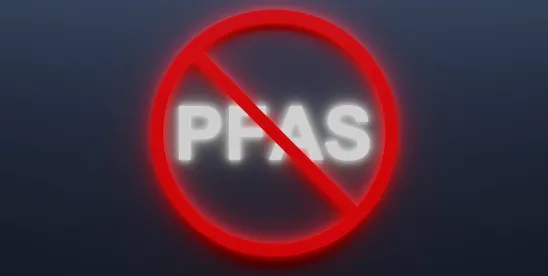The U.S. Environmental Protection Agency (EPA) announced on July 11, 2024, that it granted a petition filed under Section 21 of the Toxic Substances Control Act (TSCA) requesting that EPA establish regulations under TSCA Section 6 prohibiting the manufacturing, processing, use, distribution in commerce, and disposal of three per- and polyfluoroalkyl substances (PFAS) formed during the fluorination of plastic containers. EPA “will promptly commence an appropriate proceeding under TSCA Section 6.” According to EPA’s announcement, EPA intends to request information, including the number, location, and uses of fluorinated containers in the United States; alternatives to the fluorination process that generates perfluorooctanoic acid (PFOA), perfluorononanoic acid (PFNA), and perfluorodecanoic acid (PFDA); and measures to address risk from PFOA, PFNA, and PFDA formed during the fluorination of plastic containers. The action reflects a growing trend to optimize TSCA’s citizen petition provision, a topic discussed at length at our TSCA Reform — Eight Years Later program held on June 26, 2024.
Background
As reported in our December 7, 2023, blog item, EPA announced on December 1, 2023, that it issued orders to Inhance Technologies, L.L.C. (Inhance) directing it not to produce PFAS, “chemicals that are created in the production of its fluorinated [high-density polyethylene (HDPE)] plastic containers.” EPA states that in December 2022, Inhance submitted significant new use notices (SNUN) for nine long-chain PFAS, including PFOA, PFNA, and PFDA. According to EPA, “[u]pon review of the SNUNs and consistent with EPA’s Framework for Addressing New PFAS and New Uses of PFAS, EPA has determined that three of the PFAS [PFOA, PFNA, and PFDA] are highly toxic and present unreasonable risks that cannot be prevented other than through prohibition of manufacture.” Therefore, under TSCA Section 5(f), EPA prohibited the continued manufacture of PFOA, PFNA, and PFDA that are produced from the fluorination of HDPE.
EPA notes that it also determined that “the remaining six of the nine PFAS chemicals manufactured by Inhance (PFuDA [perfluoroundecanoic acid], PFDoA [perfluorododecanoic acid], PFTrDA [perfluorotridecanoic acid], PFTeDA [perfluorotetradecanoic acid], PFHxDA [perfluorohexadecanoic acid] and PFODA [perfluoro-n-octadecanoic acid])” may present an unreasonable risk of injury to health or the environment and, under TSCA Section 5(e), is requiring Inhance to cease manufacture of these chemicals and to perform additional testing if it intends to restart production. According to EPA, Inhance’s current fluorination process for plastics produces all nine of the PFAS chemicals subject to these orders simultaneously, however, including PFOA, PFNA, and PFDA. Thus, EPA states, “the production of the other six PFAS could not restart so long as the fluorination process continues to produce PFOA, PFNA and PFDA.”
Inhance challenged EPA’s orders, and on March 21, 2024, the U.S. Court of Appeals for the Fifth Circuit vacated them. The court notes that in March 2022, EPA “charged for the first time” that Inhance’s fluorination process was subject to the 2020 significant new use rule (SNUR) regarding long-chain perfluoroalkyl carboxylate chemical substances. The court states that it agrees with Inhance that EPA “exceeded its statutory authority by issuing orders under Section 5 instead of Section 6 because Inhance’s forty-year-old fluorination process is not a ‘significant new use’ under TSCA.” Inhance maintained that its fluorination process cannot be considered new because it is a “decades-old” process that did not “recently come into existence,” while EPA argued that a significant new use is “any use ‘not previously known to the EPA.’” Because Inhance did not identify its fluorination process as an “ongoing use” during the SNUR rulemaking process, EPA argued that the fluorination process qualified as a significant new use.
The court “hasten[s] to add that our ruling [prohibiting EPA’s December 2023 orders] does not render the EPA powerless to regulate Inhance’s fluorination process.” According to the court, EPA “can properly proceed, abiding the [Administrative Procedure Act’s (APA)] procedural guardrails, under TSCA’s Section 6 by conducting inter alia the appropriate cost-benefit analysis required for ongoing uses — a proposition even Inhance concedes.” The court notes that EPA “is just not allowed to skirt the framework set by Congress by arbitrarily deeming Inhance’s decades-old fluorination process a ‘significant new use.’” More information on the court’s decision is available in our March 25, 2024, memorandum.
As reported in our April 15, 2024, blog item, the Public Employees for Environmental Responsibility (PEER) announced on April 11, 2024, that a coalition of public health groups filed a TSCA Section 21 petition seeking to stop immediately the manufacture and distribution of “hundreds of millions of plastic containers with dangerous levels of per- and polyfluoroalkyl substances (PFAS) that leach from these containers into household products and the environment.” Petitioners ask EPA to use its TSCA Section 6 authority to prohibit immediately the production of PFOA, PFNA, and PFDA during this fluorination process.
EPA’s Evaluation of the TSCA Section 21 Petition
In its July 10, 2024, letter granting the TSCA Section 21 petition, EPA states that the petition, “taken together with information reasonably available to the EPA, sets forth facts establishing that it is necessary to initiate an appropriate proceeding under TSCA Section 6 to address PFOA, PFNA, and PFDA formed during the fluorination of plastic containers.” According to EPA, the petitioners submitted sufficient evidence to show that PFOA, PFNA, and PFDA formed during the fluorination of plastic containers present risk of concern. EPA notes that this evidence is contained in two exhibits accompanying the petition:
- A risk assessment developed by EPA in the context of its review of two consolidated SNUNs submitted by Inhance related to nine PFAS (including PFOA, PFNA, and PFDA) formed during the surface coating via fluorination of HDPE fuel and non-fuel storage containers; and
- The December 2023 order issued by EPA to address the risk identified in the risk assessment. (EPA notes that although the order was vacated by the U.S. Court of Appeals for the Fifth Circuit, the court did not specifically address the conclusions of EPA’s risk assessment.)
EPA states that in its discretion, it may consider all reasonably available information when evaluating a petition, “and has done so in this instance.” According to EPA, in its November 2023 “Risk Assessment of the Per- and Polyfluoroalkyl Substances (PFAS) in SN-23-0002-0006 and SN-23-0008-0011,” it determined that PFOA, PFNA, and PFDA (among nine total PFAS assessed) are persistent, bioaccumulative, and toxic (PBT) chemicals. EPA concluded that “there are potential or expected environmental releases of PFOA, PFNA, and PFDA and these releases are expected to result in human exposures and exposures to aquatic life, based on the manufacture, processing, distribution, use, and disposal of the fluorinated containers where these substances are present. Thus, EPA concluded there is risk of concern from the manufacture, distribution, use, and disposal of the PFOA, PFNA, and PFDA.”
Expected Actions on PFOA, PFNA, and PFDA Formed during the Fluorination Process
EPA states that it “will promptly commence an appropriate proceeding under TSCA Section 6 associated with the formation of PFOA, PFNA, and PFDA during the fluorination of plastic containers.” As part of that proceeding, EPA intends to request information, including the number, location, and uses of fluorinated containers in the United States; alternatives to the fluorination process that generates PFOA, PFNA, and PFDA; and measures to address risk from PFOA, PFNA, and PFDA formed during the fluorination of plastic containers. According to EPA, “[t]his action will build on efforts underway among governments (e.g., federal, Tribal, and state), non-governmental organizations, academia, and industry, to ensure that any risks associated with PFOA, PFNA, and PFDA are appropriately evaluated and managed.”
Commentary
The utility of TSCA Section 21 is considerable. The non-governmental organization (NGO) community has optimized its value more than others. Given EPA’s defeat in the Inhance case, EPA’s granting of this petition is unsurprising. It reflects EPA’s willingness to initiate a Section 6 rulemaking, albeit not its first option, which is exactly what the U.S. Court of Appeals for the Fifth Circuit told EPA it should have done to address any unreasonable risk associated with these PFAS. An open question is whether the court’s vacatur of the orders and SNUNs also vacates the determinations that are the basis for the Section 6 rulemaking. It remains to be seen if the data on which EPA relied in granting the petition are sufficient for Section 6 purposes. It is also noteworthy that EPA intends to seek information on the number, location, and uses of fluorinated containers in the United States, information that could prove serviceable to entities beyond EPA.
How EPA addresses these matters in addition to its regularly scheduled programming will be interesting to watch.




 />i
/>i

